Stebuklingas pulkininko leitenanto Eduardo Graudino išsigelbėjimas nuo sušaudymo
1944 m. lapkritį vokiečių okupacinės valdžios karo teismas nuteisė 8 generolo Kurelio grupės štabo karininkus, trims štabo karininkams dėl įvairių priežasčių buvo suteikta malonė. Pulkininkui leitenantui pavyko išvengti sušaudymo, tačiau Graudinį „sutrypė“ vokiečių koncentracijos stovyklų sistema.
1944 m. lapkričio 19–20 d. naktį Liepojos Karostos kalėjime įvyko vokiečių okupacinės valdžios karo teismas, kuriame mirties bausme buvo nuteisti aštuoni generolo Kurelio grupės štabo karininkai, trims štabo karininkams dėl įvairių priežasčių buvo suteikta malonė.
Pulkininkas leitenantas Eduardas Graudinsas buvo vedęs vokietę-baltaodę moterį, ir jie turėjo du vaikus, sūnų ir dukterį. XX a. trečiojo dešimtmečio pabaigoje jis išsiskyrė, o buvusi žmona su dviem vaikais 1939 m. emigravo į Vokietiją. Sūnus buvo pašauktas į Vokietijos ginkluotąsias pajėgas ir tarnavo elitiniame „Grossdeutschland“ divizione. Jis žuvo mūšyje 1944 m. vasaros pabaigoje. Teismo metu buvusi žmona parašė prašymą dėl malonės, remdamasi sūnaus tarnyba. Eduardas Graudinsas buvo išsiųstas į Štuthofo koncentracijos stovyklą ir mirė 1945 m. vasarį, kai ji buvo evakuota.
GRAUDINS EDUARDS Petro sūnus
Nepriklausomybės kuopos kapitonas. Latvijos riterių ordino, Latvijos riterių ordino, Lenkijos ginkluotųjų pajėgų (LKOK) riterių ordino, Rit ...
Latvijos nuopelnų legiono ordinas, įteiktas 1921 m.
Jūsų komentarai
Dėkojame už jūsų informaciją. Šią informaciją parengė istorikai, galbūt jie turėjo kokių nors dokumentų, patvirtinančių tai, kas parašyta tekste.
Susijusi laiko juosta
Susijusios vietos
Generolo Kurelio štabo karininkų sušaudymo vieta
1944 m. liepos pabaigoje, Raudonajai armijai įsiveržus į Latvijos teritoriją, vokiečių okupacinė valdžia leido Rygos rajono policijos viršininkui ir atkurtos Latvijos gvardijos organizacijos 5-ojo Rygos gvardijos pulko vadui Jāniui Veidei įkurti „Rygos gvardijos pulko Generolo Kurelio grupę“. Jos vadu tapo Latvijos Centrinės Tarybos Karinės komisijos vadovas Latvijos armijos generolas Jānis Kurelis.
Kureliai Vidžemėje veikė iki 1944 m. rugsėjo mėn., kai persikėlė į Kuržemę, kur buvo dislokuoti Stiklių namuose Puzės valsčiuje, Ilzikių Usmos valsčiuje, Ilinių Gibuli valsčiuje ir Edolėje bei kitose Šiaurės Kuržemės vietose. Iki 1944 m. spalio pabaigos kureliečiai turėjo apie 3000 ginkluotų vyrų, tarp kurių buvo daug buvusių Latvijos SS savanorių legiono dalinių karių, kurie įstojo į dalinį, kad įgyvendintų savo svajonę – kovą už Latvijos nepriklausomybę.
1944 m. lapkričio pradžioje vokiečių okupacinės valdžios vyriausioji policija ir SS vadas Ostlande, SS oberrupenfiureris Friedrichas Jeckelnas, pradėjo riboti grupės veiklą ir lapkričio 14 d. Stikliuose, Pusios valsčiuje, suėmė kureliečių štabą ir daugiau nei 700 kareivių. Leitenanto Roberto Rubenso vadovaujamas batalionas, turėdamas apie 500 vyrų Usmos apylinkėse, priešinosi ir tęsė kovas iki 1944 m. gruodžio mėn.
1944-19-20 naktį vokiečiai kovojo prieš vokiečius. 1944 m. lapkričio 19-19 d. Liepojos Karaosto kalėjime vyko vokiečių okupacinės valdžios karo lauko teismas, kuriame buvo nuteisti mirti aštuoni generolo Kurelio grupės štabo karininkai - pulkininkas Pēteris Liepiņš, kapitonas Kristaps Upelnieks, kapitonas Jūlijs Mucenieks, leitenantas Jānis Gregoras, leitenantas Jānis Gregoras. leitenantas Filipsonas ir adjutantas Kārlis Valtersas. Trys štabo karininkai – pulkininkas leitenantas Eduards Graudins, leitenantas Arthurs Ankravs ir seržantas Vili Pavulāns dėl įvairių priežasčių buvo atleisti. Lapkričio 20-osios popietę nuteistieji buvo sušaudyti kopose prie Karostos kalėjimo, kur šiandien galima pamatyti baltą kryžių.
1994 m. Liepojos Karostos kopose buvo įkurtas memorialas sušaudytiems karininkams. 2012 m., po to, kai memorialas buvo nuplautas į jūrą, jis buvo atkurtas dabartinėje vietoje.
*** Išversta naudojant www.DeepL.com/Translator (nemokama versija) ***
Kureliečių būstinė Stiklose
Stikli miestelyje esantis Anahitų medžioklės namelis buvo kureliečių būstinė Antrojo pasaulinio karo metu nuo 1944 m. spalio 29 d. iki lapkričio 14 d. Šis pastatas išliko iki šių dienų.
Stikli apylinkėse gausu ne tik pelkių ir miškų, bet ir smėlio. 1897 m. pradėjo veikti naujoji anahitų stiklo gamykla – taip ši Latvijos gyvenvietė gavo pavadinimą Stikli. 1900 m. ten pat, ant Stikli ežero kranto, buvo pastatyta vadinamoji anahitų medžioklės pilis, tiksliau sakant, pastatas, kuriame gyveno gamyklos vadovas.
Rubenio bataliono mūšių vieta 1944 m. gruodžio 6–9 d.
Atminimo vieta leitenanto R. Rubenio bataliono mūšių vietoje 1944 m. gruodžio 6–9 d., tarp „Vėverio“ ir „Dzilno“ namų Ugalės valsčiuje.
„Pasienio“ namai Skriverių valsčiuje
Skrīverių valsčiaus „Pasienio“ namas yra vieta, kur 1944 m. liepos 28 d. prasidėjo generolo J. Kurelio grupės formavimasis.
Atminimo akmuo kureliečių atminimui Skrīverių valsčiuje
Atminimo akmuo kureliams prie „Robežių“ namų Skrīverių valsčiuje, atidengtas 2015 m.
Strazdės dvaras
Strazdės dvaras yra Rygos–Ventspilio plento pakraštyje ir nuo 1944 m. rugsėjo 29 d. iki spalio 28 d. buvo generolo Janio Kurelio grupės štabas. Dvaro pastatuose buvo dislokuotas Skrīverių batalionas, vadovaujamas pulkininko leitenanto Eduardo Graudinšo. Kureliai buvo 1944 m. vasarą Vidžemėje iš Rygos apygardos gvardijos suformuotas karinis dalinys, kurio tikslas buvo atkurti Latvijos nepriklausomybę tarp Vokietijos armijos atsitraukimo ir SSRS kariuomenės puolimo Latvijos teritorijoje.
Nuo 1922 m. mokyklos reikmėms smarkiai perstatytas, rekonstrukcijos metu prarado savo pirminę išvaizdą ir proporcijas. Strazdės dvarą supa gražus parkas.
Jekelno būstinė Talsuose
Šiame Talsų pastate 1944 m. lapkričio 3 d. generolas J. Kurelis ir kapitonas K. Upelnieks vedė derybas su SS obergrupefiureriu F. Jekelnu ir kitais vokiečių karininkais. Istorinis pastatas buvo nugriautas, o jo vietoje statomas naujas.
Buvusi parduotuvė / policijos pastatas
Buvęs parduotuvės / policijos pastatas Talsuose, Kr.Valdemāra 2, kuriame nuo 1944 m. lapkričio 14 iki 19 d. buvo kalinami generolo J. Kurelio grupės štabo pareigūnai.
Kureliečių atminimo akmuo Stiklose
Atminimo akmuo kureliečiams prie anahitų medžioklės namelio „Stiklos“ Puzės valsčiuje, atrastas 1997 m., perkeltas 2023 m.
Šalia akmens yra informacinė lentelė su QR kodu, kurioje audiogidas pasakoja istoriją apie kurelius.
Atminimo vieta senosiose Anahitų kapinėse
Atminimo vieta senosiose Anahitų kapinėse, kur palaidoti 1944 m. lapkričio 14 d. per vokiečių apgultį generolo J. Kurelio grupės štabo ir pagrindinių pajėgų žuvę kareiviai ir civiliai.
Atminimo paminklai generolo J. Kurelio grupei ir leitenantui R. Rubeniui „Dzelžkalnų“ kapinėse
Atminimo akmenys generolo J. Kurelio ir leitenanto R. Rubenio grupei Puzės parapijos „Dzelzkalnių“ kapinėse. Atidengti 1997 m.
Atminimo ženklai buvo įrengti dar prieš įkuriant Rubenio bataliono muziejų.
Avarijos vieta netoli Čiubu namų Rendos valsčiuje
„Čiūbų“ namai yra į šiaurę nuo Ozolų, Rendos valsčiuje. Susidūrimas su vokiečiais prie leitenanto L. Znutėno antrosios kuopos, priklausančios leitenantui V. Strautnieko batalionui, Čiūbų namų įvyko 1944 m. lapkričio 16 d.
Baltasis kryžius ir egzekucijos vieta Karostoje
Baltasis kryžius ir egzekucijos vieta priešais Liepojos Karostos kalėjimą. Atidengtas 2000 m.
Paminklas sušaudytiems leitenanto R. Rubenio bataliono kariams
Rubenio bataliono karių kapinės yra Kuldygos–Sabilės kelyje, priešais vietą, kur anksčiau buvo Rendos daktaro disertacija. Prie kelio yra rodyklė, o vos už kelių šimtų metrų nuo kelio – paminklinis akmuo.
Leitenanto Roberto Rubenio batalionas buvo viena iš generolo Jānio Kurelio suformuoto karinio dalinio dalių, kuris nepasidavė vokiečių kariuomenei ir demonstravo aršų vokiečių pasipriešinimą. Usmos laikotarpiu bataliono skaitinė sudėtis išaugo iki 650 vyrų, jame buvo keturios pilnai įrengtos kuopos, greitoji medicinos pagalba ir ūkio komanda. Vadovaujantis štabas: leitenantas R. Rubenis, leitenantas Filipsons, eilinis A. Druviņš, eilinis Šulcs, eilinis Briedis, eilinis seržantas J. Rubenis, eilinis J. Bergs, eilinis Jaunzems.
1944 m. lapkričio 14–gruodžio 9 d. Ugalės, Usmos, Rendos ir Zlėkų valsčiuose vyko įnirtingi mūšiai tarp policijos generolo Friedricho Jekelno vadovaujamų Vokietijos 16-osios armijos, SD ir SS dalinių dalių ir leitenanto Roberto Rubenio vadovaujamo Kurelių dalinio atskiro bataliono. Mūšiuose prie Rendos ir Zlėkų žuvo apie 250 vokiečių kareivių, o Rubenio pulkas patyrė apie 50 aukų.
Po leitenanto Rubenio mirties Druvinšas savo vyrams paskelbė, kad nuo šiol veiks savanoriškai, todėl kelios dešimtys vyrų nusprendė atsiskirti nuo Rubenio bataliono. 1944 m. lapkričio 20–21 d. vokiečių SD dalinys sugavo 11 žmonių grupę ir po tardymo nuvežė į vietinį mišką bei sušaudė.
Rubenio bataliono mūšių vieta 1944 m. lapkričio 18 d.
Atminimo vieta leitenanto R. Rubenio bataliono mūšių vietoje 1944 m. lapkričio 18 d., tarp „Pērkono“ ir „Mežzīlių“ namų Rendos valsčiuje.






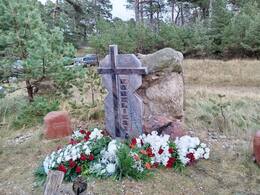

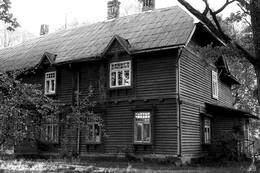
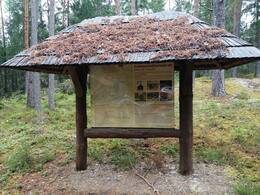
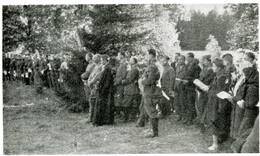
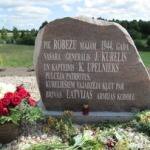
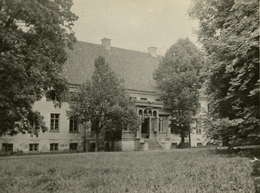
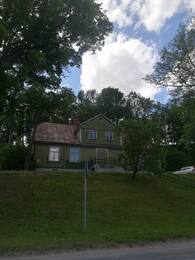

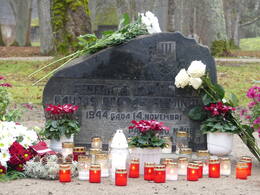
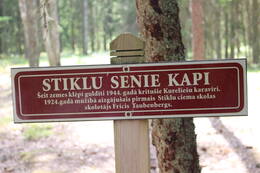
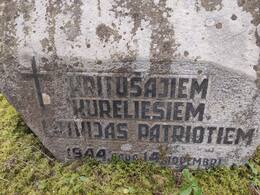
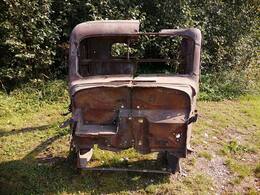
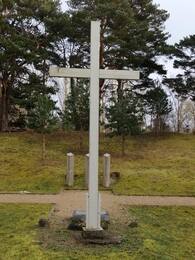
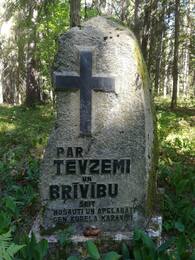
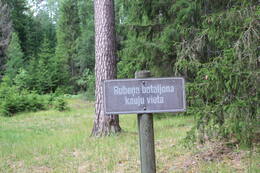
Dalis to yra mitas. Esu Eduardo anūkė iš antrosios santuokos. Pirmoji jo žmona turėjo dvi dukteris ir sūnų, kuris žuvo vokiečių tankų divizijoje, jam tuo metu buvo apie 17 metų. Jo pirmoji žmona niekaip negalėjo girdėti apie karo teismą, juo labiau dalyvauti ar įteikti laišką, nes ji buvo Lenkijoje. „Karo teismas“ (kuris buvo akivaizdžiai neteisėtas, nes kureliečiai nebuvo Vokietijos armijos dalis) buvo pasala. Jis buvo suimtas per „susitikimą“, o kitą dieną buvo teisiamas ir nuteistas. Turime laiškų, kuriuos jis rašė iš kalėjimo prieš ir po „teismo“. Jis susilaukė 3 vaikų su savo antrąja žmona, kuri teismo metu buvo netoli Talsų, sekė į Štuthofą, bet negalėjo su juo susisiekti. Ji persikėlė į Australiją. Pirmosios žmonos šeima persikėlė į Ameriką. Nežinome, kodėl teismo metu jis nebuvo nušautas, bet laiško nebuvo.